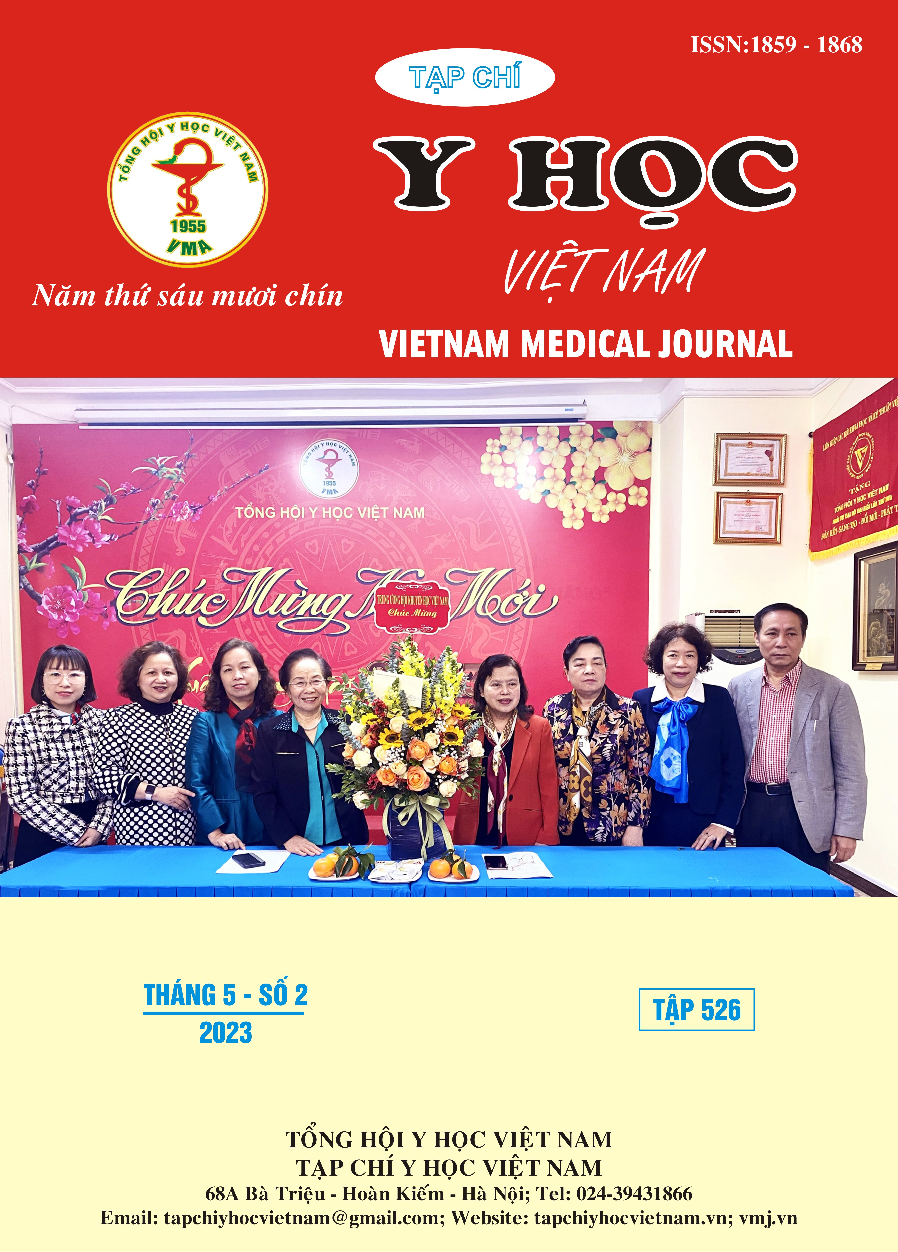THE RESULT OF FUNCTIONAL END TO END ESOPHAGOJEUNOSTOMY IN THE TOTALLY LAPAROSCOPIC TOTAL GASTRECTOMY
Main Article Content
Abstract
Background: We aimed to evaluate the outcomes of the technique of functional end-to-end esophagojejunostomy by linear stapler without previous resection of the esophagus and jejunum in the totally laparoscopic total gastrectomy (TLTG) and report experience in 106 patients. Materials and Mehods: A prospective observational study on patients received technique of functional end-to-end esophagojejunostomy by linear stapler without previous resection of esophagus and jejunum in TLTG between July 2017 to July /2022. Results: We included 106 patients with a mean age of 63.2 ± 11.7 (26 – 88). 10.4% of patients having tumors in the upper third of the stomach and 88.7% of patients having tumors in the middle of the stomach. There were 4.7% of cases having incidents during the surgery and 3.6% of cases having complications after the surgery. There were 2 (1.8%) cases of technical errors in making an oesophageal jejunal anastomosis during surgery. No anastomotic leakage or death was observed after the surgery. The operation time was 201.5 ± 29.0 (145 - 270) minutes. The mean hospital stay was 7.56 ± 2.23 (5 - 15) days. 04 (3.6%) cases of reflux esophagitis, and 03 (2.7%) mild stenosis of the anastomosis after surgery, and 1 (0.9%) recurrence at the anastomosis after surgery. Conclusion: The technique of functional end-to-end esophagojejunostomy by linear stapler without previous resection of esophagus and jejunum was safe and effective in TLTG.
Article Details
Keywords
Esophagojejunostomy in laparoscopy, The technique of functional end-to-end.
References
2. Dinh Van Chien, NV. Huong, et al (2020), “Totally laparoscopic total gastrectomy with technique of functional endto-end esophagojejunostomy by linear stapler without previous resection of the esophagus and jejunum”. International Surgery Journal | November 2020 | Vol 7 | Issue 11. PP: 3614-3619.
3. Steichen FM (1968) The use of staplers in anatomical side-to-side and functional end-to-end enteroanastomoses. Surgery 64:948–953
4. Okabe H, Tsunoda S, Tanaka E, et al (2014). “Is laparoscopic total gastrectomy a safe operation? A review of various anastomotic techniques and their outcomes”, Surg Today, 45(5), 549-558.
5. Shinohara T, Kanaya S, Taniguchi K, et al (2009). “Laparoscopic Total Gastrectomy with D2 Lymph Node Dissection for Gastric Cancer”, Arch Surg, 144 (12), 1138-1142.
6. Ebihara Y, Okushiba S, Kawarada Y, et al (2013). “Outcome of functional end-to-end esophagojejunostomy in totally laparoscopic total gastrectomy”, Langenbecks Arch Surg, 398, 475-479.
7. Japanese Gastric Cancer Association (2011). “Japanese classification of gastric carcinoma – 3rd english edition”. Gastric Cancer, 14, pp. 101–112.
8. Kim EY et al. Totally Laparoscopic Total Gastrectomy Versus Laparoscopically Assisted Total Gastrectomy for Gastric Cancer. Anticancer Res 2016;36(4):1999-2003.
9. Chen K, Mou YP, Xu XW, et al (2014). “Short-term surgical and long-term survival outcomes after laparoscopic distal gastrectomy with D2 lymphadenectomy for gastric cancer”, BMC Gastroenterol, 14, 41-48.
10. Lee JH, Lee CM, Son SY, et al (2014). “Laparoscopic versus open gastrectomy for gastric cancer: long-term oncologic results”, Surgery, 155 (1), 154-164.


